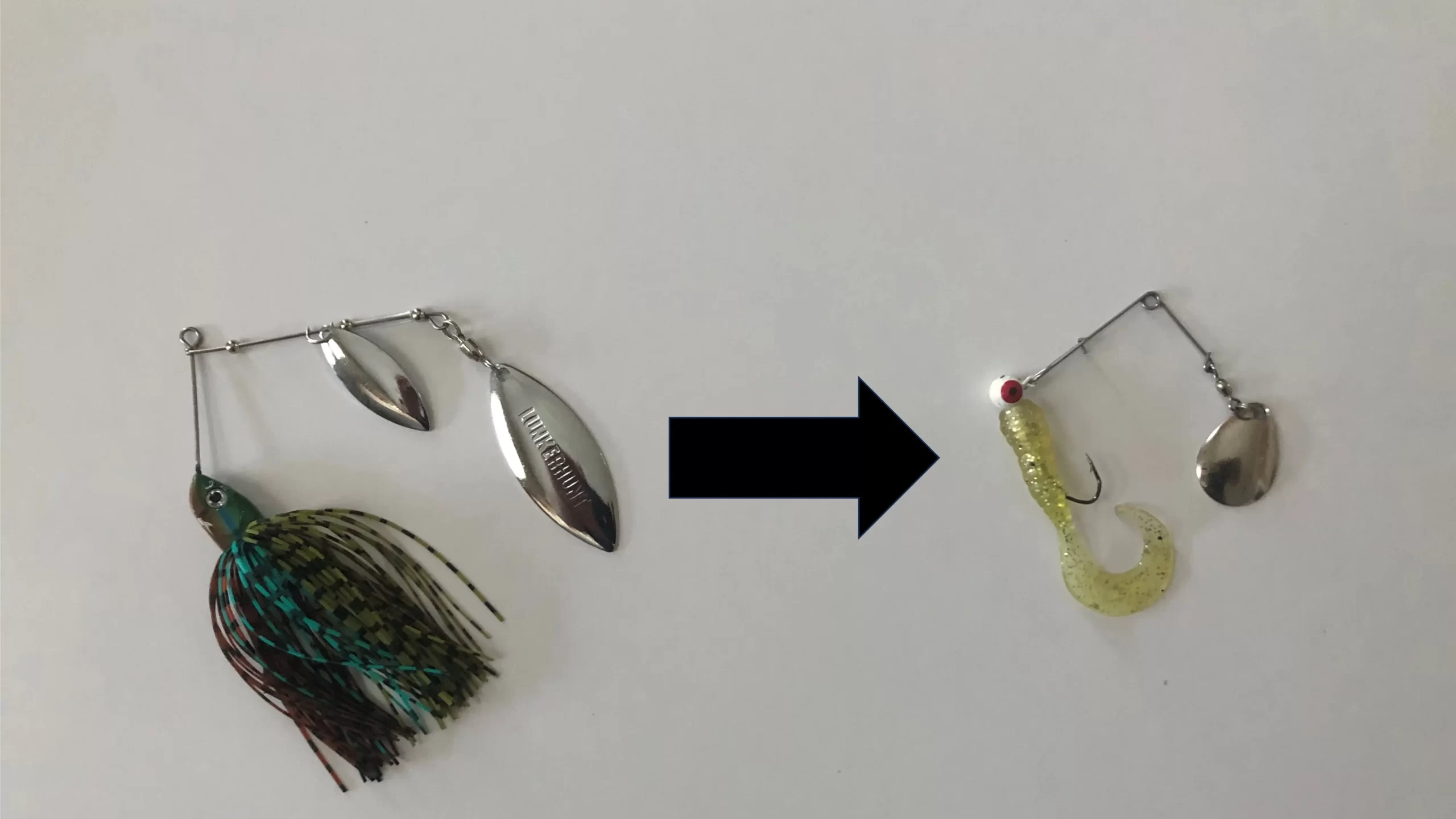How to Catch More Largemouth Bass

* This page contains affiliate links. The Great Lakes Fisherman may earn a commission on items purchased through these links. For more on this, please click here.
Have you ever been frustrated after using a new bait that you saw promoted on a bass fishing show and wondered why you just don’t seem to catch the fish like they do on the program? Speaking for myself, I can say that I have purchased some baits that seemingly hammer the fish on TV but which don’t catch a single fish for me. Is it just me? Probably. But there is something I have noticed that was likely controbuting to this. Read on to learn how to catch more largemouth bass.
When I was young, we fished quite a bit for bass and the fish we caught were not particularly impressive in size. Sure, occassionaly we’d land a whopper, but they were few and far between. As I got older, we started getting into walleye, perch and salmon fishing and the bass fishing sort of fell by the wayside.
About 15 years ago, I went on a crappie fishing trip to Mississippi with my dad. I became hooked. As a result, I started pursuing crappie back in Michigan, my home state. And one of the things that caught my attention was how many more bass I was catching while pursing these crappie. What was even more interesting was how large some of these bass were.
About that same time, we started taking annual spring break trips to the south. Each spring, we would rent a lake house on a different lake in the south and take our boat to fish the lake. It was during those trips that I learned just how different natural northern lakes were from southern impoundments. And one of the biggest differences from a fishing perspective was the forage that is available for game species such as bass.
It is no secret that fish of a given species, in general, get much larger in the south. One only needs to look at the record books to see how true this is. This means that, on average, the forage species in the south are much larger than what is available in the north.
Marketing, Marketing, Marketing
Have you ever noticed that most national bass fishing shows are taped in the south? It makes perfect sense that this would be the case. Most people want to see people catching 6-12+ lb. lunkers vs. 1-6 lb. fish. And it is these tv shows that largely drive the sale of fishing products. So it stands to reason that these shows would promote the products that were being used by the pro fisherman on these fishing shows. That is just marketting 101.
The problem is that when we fisherman in the north take to our local lakes and streams, we are using the same products that were promoted on these TV shows. And in many cases these products imitate forage that is much larger than what is in most of our lakes and streams. This means that we spend hours throwing baits that will often be ignored by the fish in our lakes.
Now don’t get me wrong, I am not suggesting that you will never catch fish on these baits. Fish hit baits for all sorts of reasons and these baits will produce from time to time. And when they do, the fish will usually be on the larger size (if for no other reason than the smaller ones can’t get them in their mouths). But what I have found, is that my catch rate has increased tremendously by using baits that are the size of a large minnow and that includes my catch rate of larger fish.
3 Alternative Baits to Try
So what baits can your try as alternatives to these very large, traditional bass baits? Here are three baits that will catch a ton of bass in northern waters.
1. Johnson’s Beetle Spin
Instead of using a full sized spinner bait, try a beetle spin. This is effectively a miniature version of a spinner bait and in my opinion is many times more productive in northern waters. Start with a slow retreive to allow the bait to swim at a lower depth.
2. Jig and Plastic
Another bait that has proven to be extemely productive is a small jig and plastic. Try a 1/16 to 1/8 oz. jig head in either white or chartreuse, tipped with a minnow-style plastic in the 2-4″ length range. Cast this presentation into areas know to hold bass, let it fall to depth that is a foot or so above the weedtops, and swim it back to the boat, varying your speed until you find success. Again, always start with a very slow retrieve.
3. Plastic Worm Rigged Wacky Style
This is one of the most natural looking baits for any inland lake fish. Simply cast the rig to where the fish are and let it fall. Keep a bow in your line on the fall and watch for a twitch in the line. Once on the bottom, let it sit for 5-10 seconds before reeling in and repeating.
